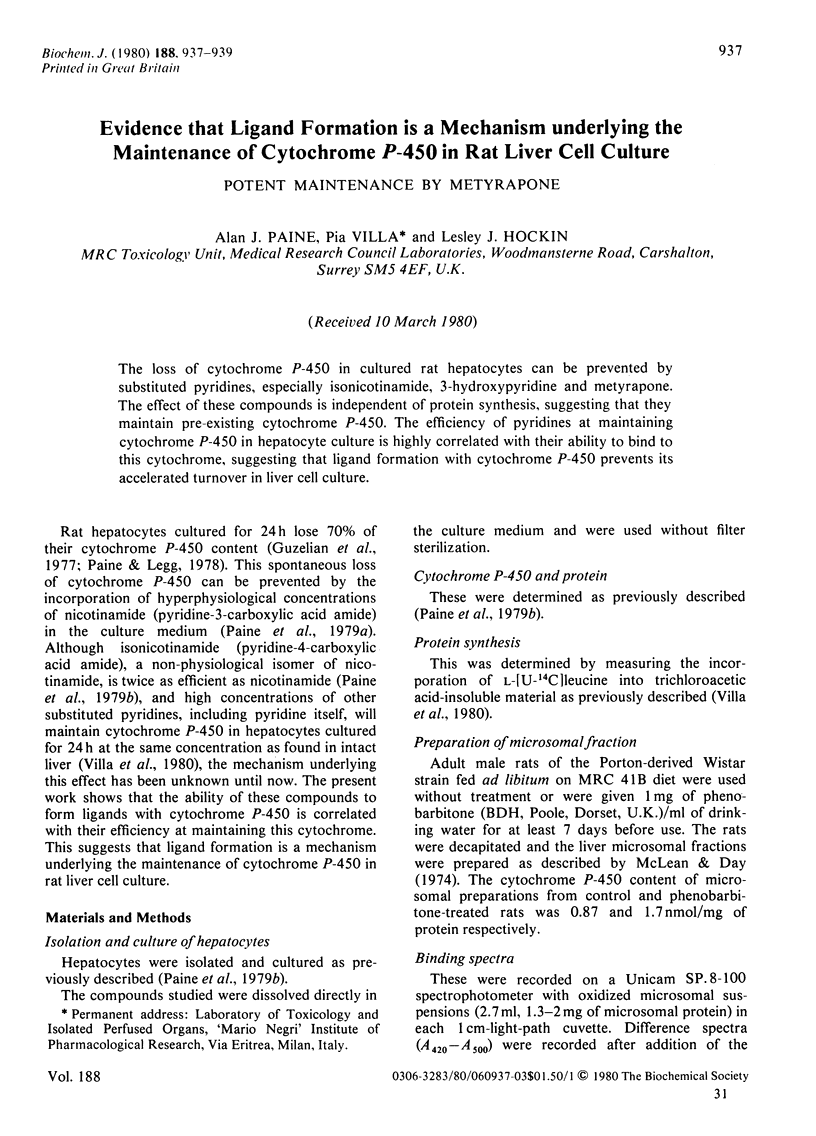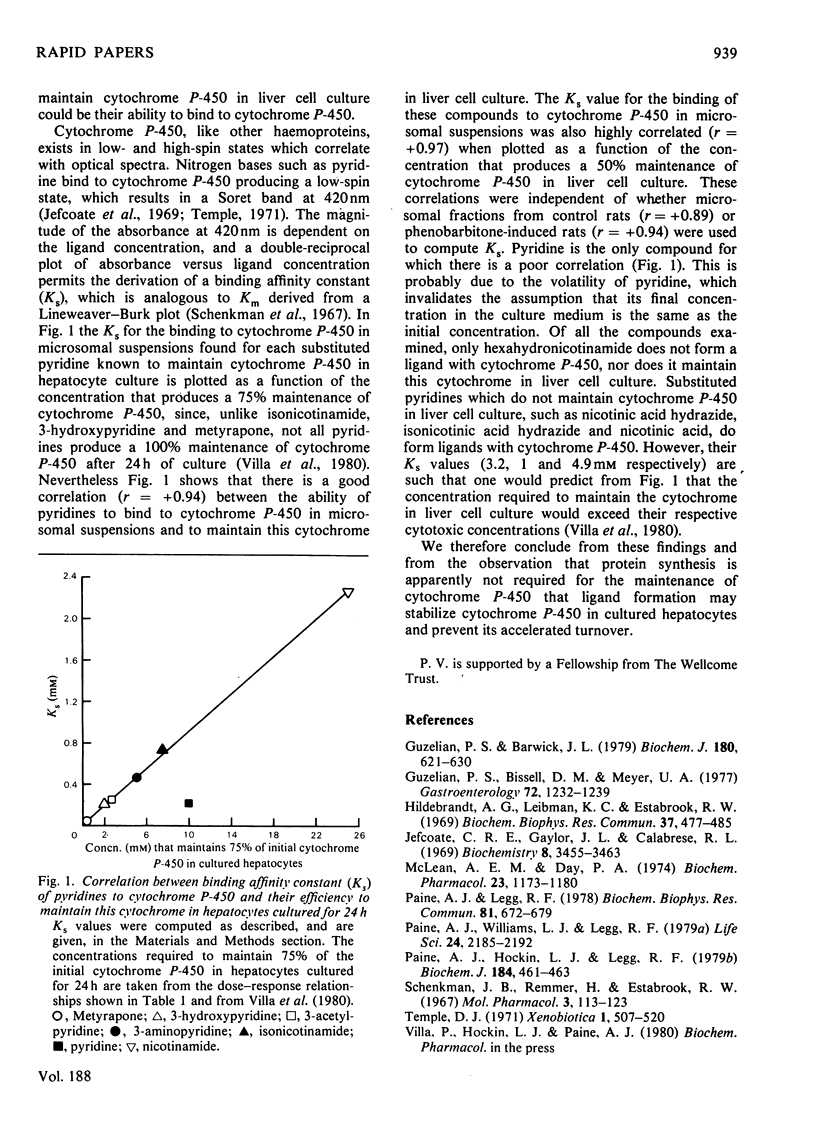Abstract
The loss of cytochrome P-450 in cultured rat hepatocytes can be prevented by substituted pyridines, especially isonicotinamide, 3-hydroxypyridine and metyrapone. The effect of these compounds is independent of protein synthesis, suggesting that they maintain pre-existing cytochrome P-450. The efficiency of pyridines at maintaining cytochrome P-450 in hepatocyte culture is highly correlated with their ability to bind to this cytochrome, suggesting that ligand formation with cytochrome P-450 prevents its accelerated turnover in liver cell culture.
Full text
PDF


Selected References
These references are in PubMed. This may not be the complete list of references from this article.
- Guzelian P. S., Barwick J. L. Inhibition by cycloheximide of degradation of cytochrome P-450 in primary cultures of adult rat liver parenchymal cells and in vivo. Biochem J. 1979 Jun 15;180(3):621–630. doi: 10.1042/bj1800621. [DOI] [PMC free article] [PubMed] [Google Scholar]
- Guzelian P. S., Bissell D. M., Meyer U. A. Drug metabolism in adult rat hepatocytes in primary monolayer culture. Gastroenterology. 1977 Jun;72(6):1232–1239. [PubMed] [Google Scholar]
- Hildebrandt A. G., Leibman K. C., Estabrook R. W. Metyrapone interaction with hepatic microsomal cytochrome P-450 from rats treated with phenobarbital. Biochem Biophys Res Commun. 1969 Oct 22;37(3):477–485. doi: 10.1016/0006-291x(69)90940-1. [DOI] [PubMed] [Google Scholar]
- Jefcoate C. R., Gaylor J. L., Calabrese R. L. Ligand interactions with cytochrome P-450. I. Binding of primary amines. Biochemistry. 1969 Aug;8(8):3455–3463. doi: 10.1021/bi00836a049. [DOI] [PubMed] [Google Scholar]
- McLean A. E., Day P. A. The use of new methods to measure: the effect of diet and inducers of microsomal enzyme synthesis on cytochrome P-450 in liver homogenates, and on metabolism of dimethyl nitrosamine. Biochem Pharmacol. 1974 Apr 1;23(7):1173–1180. doi: 10.1016/0006-2952(74)90291-3. [DOI] [PubMed] [Google Scholar]
- Paine A. J., Hockin L. J., Legg R. F. Relationship between the ability of nicotinamide to maintain nicotinamide-adenine dinucleotide in rat liver cell culture and its effect on cytochrome P-450. Biochem J. 1979 Nov 15;184(2):461–463. doi: 10.1042/bj1840461. [DOI] [PMC free article] [PubMed] [Google Scholar]
- Paine A. J., Legg R. F. Apparent lack of correlation between the loss of cytochrome P-450 in hepatic parenchymal cell culture and the stimulation of haem oxygenase activity. Biochem Biophys Res Commun. 1978 Mar 30;81(2):672–679. doi: 10.1016/0006-291x(78)91589-9. [DOI] [PubMed] [Google Scholar]
- Schenkman J. B., Remmer H., Estabrook R. W. Spectral studies of drug interaction with hepatic microsomal cytochrome. Mol Pharmacol. 1967 Mar;3(2):113–123. [PubMed] [Google Scholar]
- Temple D. J. Binding of nitrogen containing compounds to microsomal cytochromes. Xenobiotica. 1971 Jul-Oct;1(4):507–520. doi: 10.3109/00498257109041519. [DOI] [PubMed] [Google Scholar]


